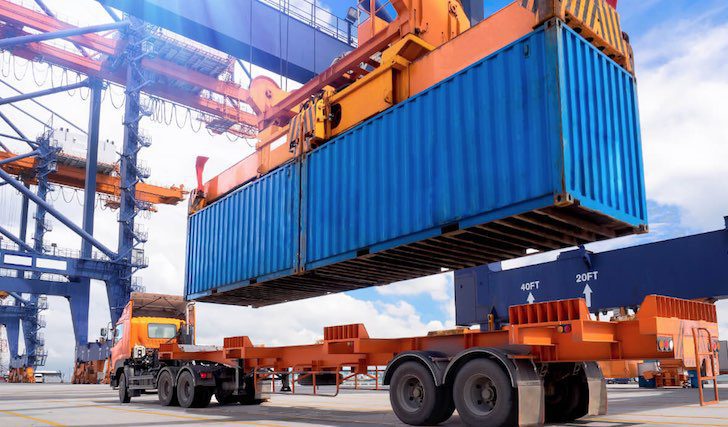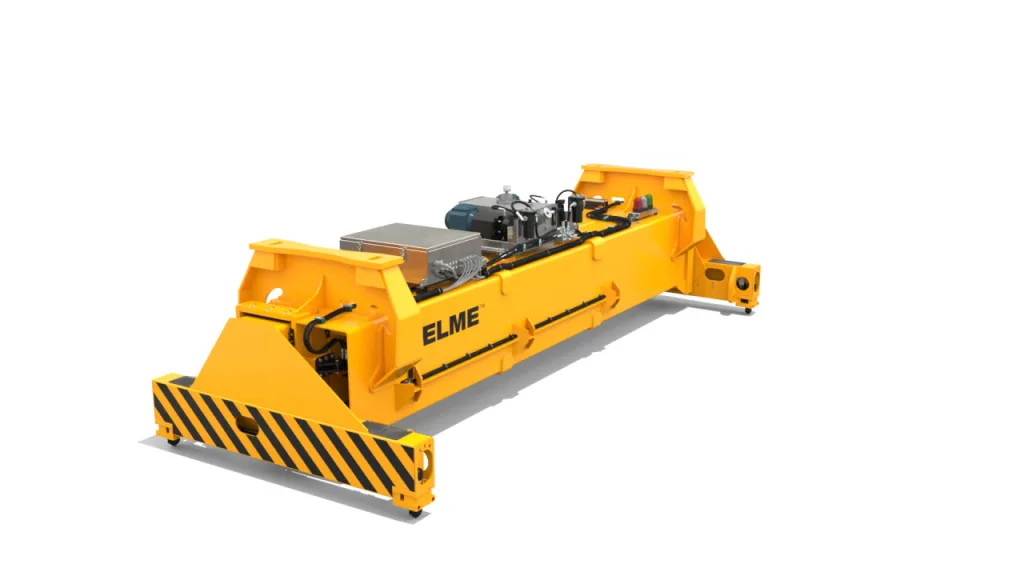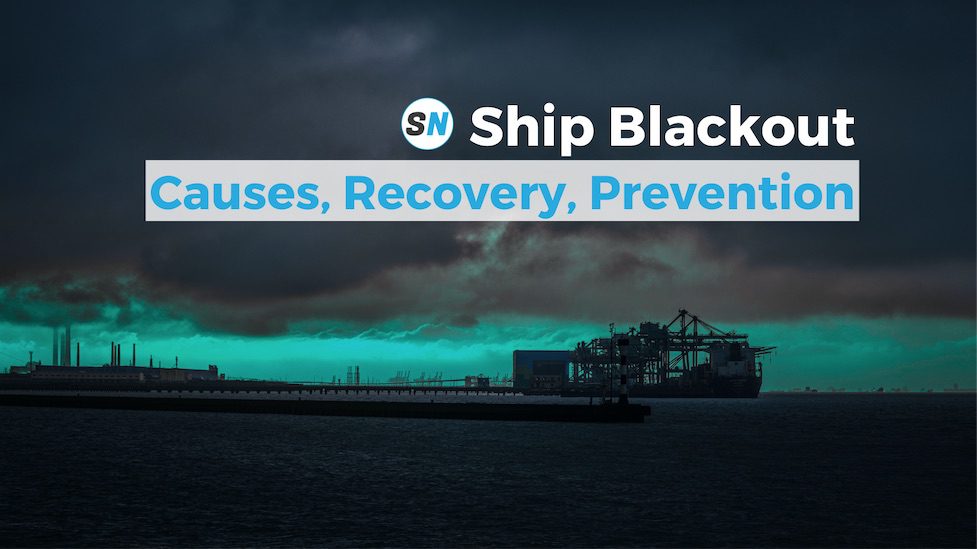28 November 2024
The Logistics of Port Operations: How advanced equipment drives global trade

Port operations have been essential to global trade for thousands of years. Learn how the complex logistical hubs leverage state-of-the-art equipment to facilitate container transportation.
Table of Contents
Introduction
Port operations have been essential to global trade for thousands of years. The earliest seaports were used primarily for fishing and trading but as maritime technology advanced, seaports became increasingly crucial for facilitating international trade. Today, ports are complex logistical hubs that leverage state-of-the-art equipment to facilitate the movement of 90% of goods from loading and unloading to warehousing and distribution.
Major ports are constructed as port complexes to cater to various activities including containers, trucks, solid bulk, liquid bulk, and passengers. These activities involve three main phases, Hinterland, Port operations, and seaside activities.

Container transport, loss & salvage
This is everything you need to know to get up to speed with container loss during transportation and salvage operations to recover the cargo.
Ship Nerd
Hinterland
Definition: organized and developed land space which is connected with a port by means of transport lines, and which receives or ships goods through that port operations.
Hinterland port operations consist of transporting goods to and from the port. To export containers through the port, freight forwarders must first communicate the cargo declaration to customers and the port authority before the arrival of trucks at the port facilities. At the port’s main gate, the trucks generally undergo an inspection to compare the information previously declared with the total load of the container and ensure safety and security requirements.
Port Operations
Inside the port, the truck must go a specific way to avoid blocking port operations traffic. Some ports have import traffic separated from export traffic. This practice aims to optimize the processing time. The containers are then unloaded and placed in the container yard using a rail-mounted Gantry crane or RMG. With high precision, the containers are sorted and organized based on their destination.
When the container is to be loaded onto the vessel shuttle carriers transfer the containers from the yard and place them in the quayside. Then they are lifted onto the vessel using a giant Gantry crane or mobile crane. The crane operator carefully positions the container over the designated slot on the vessel and then lowers it into place. Once the container is in place, it is locked to prevent it from moving during transit.
There are several other mechanically advanced handling equipment that facilitates the transfer of containers inside the terminal. Top loaders for instance are commonly used to load containers weighing up to 32 tons onto trucks for transport. Equipped with a hydraulic lifting arm, it can lift a container and place them onto the bend of a truck. It is a fast and efficient loading technique allowing containers to be loaded quickly without needing a separate Crane or lifting equipment
In the last decade, some terminals started using automated handling equipment to make container management more efficient and cost-effective. Patrick’s terminals, for instance, in Brisbane-Autostrad, was the first terminal to operate with automated container straddle carriers. These robotic machines transport and stack containers in a container yard. They use sophisticated technology to move containers that weigh up to 60 tons and they can stack them up to four highs.
The automated container straddle is remotely monitored and has the ability to connect with other terminal operating systems increasing predictability and port operations efficiency.
Vessel Unloading
Ultra-large container ships require deep water ports with a depth of more than 50 feet. One of these is the port of Antwerp. The port receives mega container ships on a daily basis. HMM Stockholm is the seventh largest container ship recently called the PSA Antwerp Noordzee terminal. The vessel is 1,312 feet long and 203 feet wide with a carrying capacity of 23,964 TEU.
To handle a vessel of this size, PSA Antwerp utilized a range of specialized equipment including Gantry cranes, straddle carriers and reach stackers to unload and load containers from The Vessel onto the terminal and vice versa. The process involved careful planning and collaboration to ensure the vessel was loaded and unloaded as quickly and efficiently as possible.
But this couldn’t have happened without the help of tugboats. When the vessel reaches the port she stops advancing under her own power and tugboats take over to guide the vessel to its allocated birth. Skillful workers then secure the vessel to the dock using mooring lines and fenders.
Now the port operations can proceed with container unloading. The unloading process involves using Quay cranes to lift the containers off the ship and onto the terminal. These cranes are massive, they can move horizontally along rails on the dock, allowing them to reach over the entire width of the ship to retrieve containers from different rows. Once the crane is lifted the container, it is swung over to the terminal and placed onto a truck chassis or a trailer. From there it can be moved to the yard for further processing.
Whether monitored remotely or manually, the crane operator must be careful to avoid collisions with other container structures or personnel both on the ship and at the terminal. The port operations personnel are dotted with excellent hand-eye coordination and depth perception.
To move containers we carefully position the crane over the container using the spreader. The spreader has a set of locking mechanisms that secure the container in place. When the spreader is well placed above the container, the crane operator lowers it until the Locking mechanisms engage with the container’s corner castings. Then the crane hoists the spreader and container off the ship’s deck and lowers them to the terminal. The spreader’s design ensures that the container remains level during the lift, preventing it from tilting or slipping. Therefore, ensure safety of port operations.

The use of advanced equipment coordination and software infrastructure allows reduced dwell time and efficient vessel-port operations. After the terminal finishes loading and unloading containers, the tugboat returns to maneuver the ship out of the port.
Journalist Rose George’s book, Ninety Percent of Everything, is the latest look at how the steel boxes get to where they’re going. One huge challenge, George says, is simply loading and unloading these giant ships, a task that calls on port operations. Hence, laid out seven fundamental notations of the process.
- Minimize the number of crane moves. Algorithms and computer systems help plan the most efficient and practical storage schemes so ships can get in and out of port fast.
- Cold boxes need juice. Refrigerated containers—or “reefers”—must be placed near a power source.
- Guard your vessel. Containers are sealed after inspection, but thieves can use simple tools to get around the seals and pop open the doors.
- Heaviest boxes go down low. This prevents the stack from collapsing. And they’re distributed as evenly as possible to keep the ship balanced.
- Place flammable stuff away from the edges. If a ship will be traveling through, say, the Indian Ocean, containers of combustible material could be ignited by rocket-propelled grenades from attacking pirates.
- Every box has an ID number. It shows the owner (green) and category (yellow) of the container, followed by a serial number (blue) and check digit (red). Once they’re loaded, a separate system locates each container by bay, row, and tier.
- Keep certain chemicals apart. Acetylene must be separated by at least one container space or bulkhead from chlorine; barium cyanide must be isolated from acids.
Technological Advancements
In recent years, the shipping industry has significantly shifted toward implementing futuristic technologies and ports to improve efficiency safety, and sustainability. One such example is the smart air rail container transport system, launched in China in 2021. The system uses a combination of air cushions and magnetic levitation to move containers at high speeds along a rail track realizing zero transfer across land, rail, and port transportation.

Another significant advancement in port technology is the fully automated container terminal. Long Beach terminal, for instance, uses advanced robotics, 5G, and AI to manage the flow of containers resulting in faster turnaround times and increased productivity.
The Antwerp container Port operations system is also a unique technological marvel as it is the world’s biggest ConRo (container and roll-on roll-off) terminal. The port allows for the simultaneous loading and unloading of both containers and vehicles using specialized equipment and automated systems. This has significantly reduced the time and labor required to move goods through the port.
These advancements in Port operations technology are set to revolutionize the shipping industry improving efficiency and sustainability while reducing costs and enhancing safety.
As the industry continues to evolve, we can expect to see even more groundbreaking Technologies being implemented in ports around the world.
See Also
How folding containers could potentially enhance transport and tackle the container crisis. What does hold them from living up to their hype?
Standardized containers clog up ports, rail yards, and warehouses both empty and full of goods. Hence, the stars are aligning for a solution that was holding back before the pandemic. Folding Containers, in an accordion or collapsible style, to as much as 1/5 their usual size. At least, that’s what their backers are hoping.

Folding Containers – Time to Shine
How folding containers could potentially enhance transport and tackle the container crisis. What does hold them from living up to their hype?


